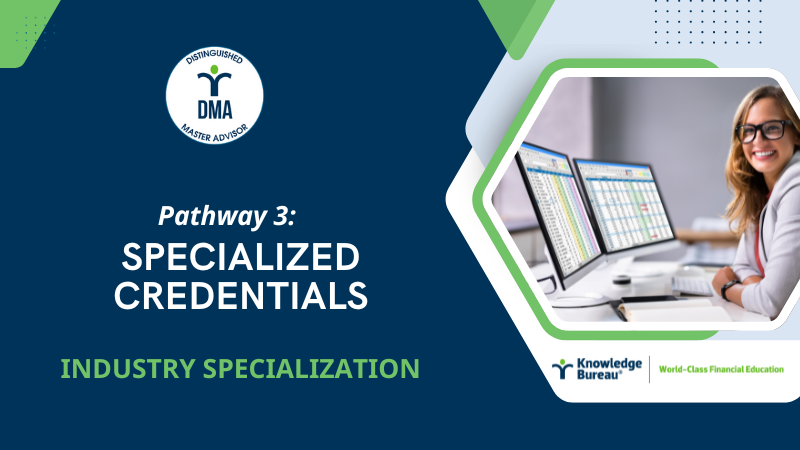
Household Debt: Larger Than Canada’s Overall GDP
It’s almost the halfway mark in the year 2025! How prepared are Canadians for uncertainty and volatility ahead? StatsCan is reporting that our debt to income ratio worsened in the first quarter of 2025. There is an opportunity for advisors to start year end tax planning early to engage clients in solutions to pay down debt. Online certificate courses leading to the DMA (Distinguished Master Advisor) designation can help shore up knowledge on tax, accounting and budgeting as well as business forecasting and planning gaps this summer. Here’s the backdrop:
The Backdrop – Know Your Client. In a household in which the major earner is between 35 and 44, the debt to income ratio declined from just over 245% in 2023 to 238.2% in 2024.This is still a number which is of concern for this demographic – the Millennials – who had the debt highest ratio in Canada.
Those under 35 also saw a noticeable improvement, with their overall debt to income ratio dropping from 175.3% to 160.8%.
Circumstances for Canadian seniors were relatively stable generally thanks to solid investment earnings in 2024. The 55-64 demo saw a slight increase in their debt to income ratio.
Some Good News. StatsCan delivered some additional positive news in the interest-only debt service ratio (DSR). It “stabilized for the first time in three years for households in all age groups, including younger households, which tend to be more indebted. For example, the interest-only DSR of households aged 35 to 44 years (11.8%) and of households aged less than 35  years (10.3%) was stable relative to a year earlier.”
years (10.3%) was stable relative to a year earlier.”
In short, a combination of factors is enabling lower and middle income earners to improve their finances. Lower interest rates, solid investment returns and improving real estate values have all contributed to helping these income groups see their wealth grow.
Now, the Bad News: To give you an idea of how much debt we‘re carrying, that $2.54 trillion is larger than Canada’s overall GDP, which sits at $2.117 trillion. We owe more money as individuals than our collective GDP. And, as mentioned above, StatsCan is reporting that our debt to income ratio worsened in the first quarter of 2025.
The chances are good that your clients will be more concerned with actual dollars than ratios. While the above figures deliver some positive news, Canadians still find themselves deep in debt. According to a recent Equifax Canada report, (Equifax Canada’s Q4 2024 Market Pulse Consumer Credit Trends Report.) consumer debt in this country reached $2.54 trillion by the end of 2024, which is a 4.6% increase from 2023. This translates into an average non-mortgage debt of nearly $22,000 per person.
Residents of Ontario and B.C. faced the greatest pressures when it comes to overall debt due to the higher cost of real estate and overall cost of living in those provinces, particularly in the major centres.
Credit card debt, the worst kind of debt there is, rose 7.8% in the 4th quarter of 2024. Debt delinquencies in all age demographics also rose in 2024. And, non-mortgage delinquencies rose across most of the country.
Build Expertise to Better Serve Indebted Clients:
For professional advisors who want to take a more proactive role in helping clients manage debt and build stronger financial futures, advanced credentials are key. The DMA™ Distinguished Master Advisor Designation program offers specialized training in areas like personal and corporate tax, accounting, family wealth management, and retirement planning. It's designed to equip advisors with practical tools to address today’s real-world challenges—like rising consumer debt—with strategic financial solutions. Whether you’re helping clients reduce debt, plan for the future, or improve financial literacy across generations, the DMA program provides the foundation to lead those conversations with confidence and credibility. Register by June 30 and receive a complimentary hard copy journal with Designation Program enrollment ($195 value).
The Bottom Line: Debt is generally the greatest source of stress for Canadians. Debt can cause us to lose sleep, suffer emotional and physical health issues and can result in a loss of productivity at work. That’s why professional advisors need to be more proactive about addressing it.
As tax and financial experts you can assist your clients with their financial planning and help them reduce their consumer debt load. Now in the post tax season, asking your clients about their financial lives and any concerns about their debt or the debt of family members can help you connect with them for potential solutions. You may find out that they are carrying more debt than they can handle. You are in a position to offer help with family budgeting and spending priorities or connect them to experts who are.
Money that is going to simply service debt is dead money and if your clients can find their way out of debt they can begin to use that money to accumulate wealth through any number of investments and tax savings plans like RRSP’s or TFSA’s.
More from StatsCan here:
https://www150.statcan.gc.ca/n1/daily-quotidien/250414/dq250414a-eng.htm
Stay tuned weekly to Knowledge Bureau Report for continuing coverage of breaking tax and economic news and tune in to a new podcast- Real Tax News You Can Use with Evelyn Jacks: podcast@knowledgebureaureport.com
